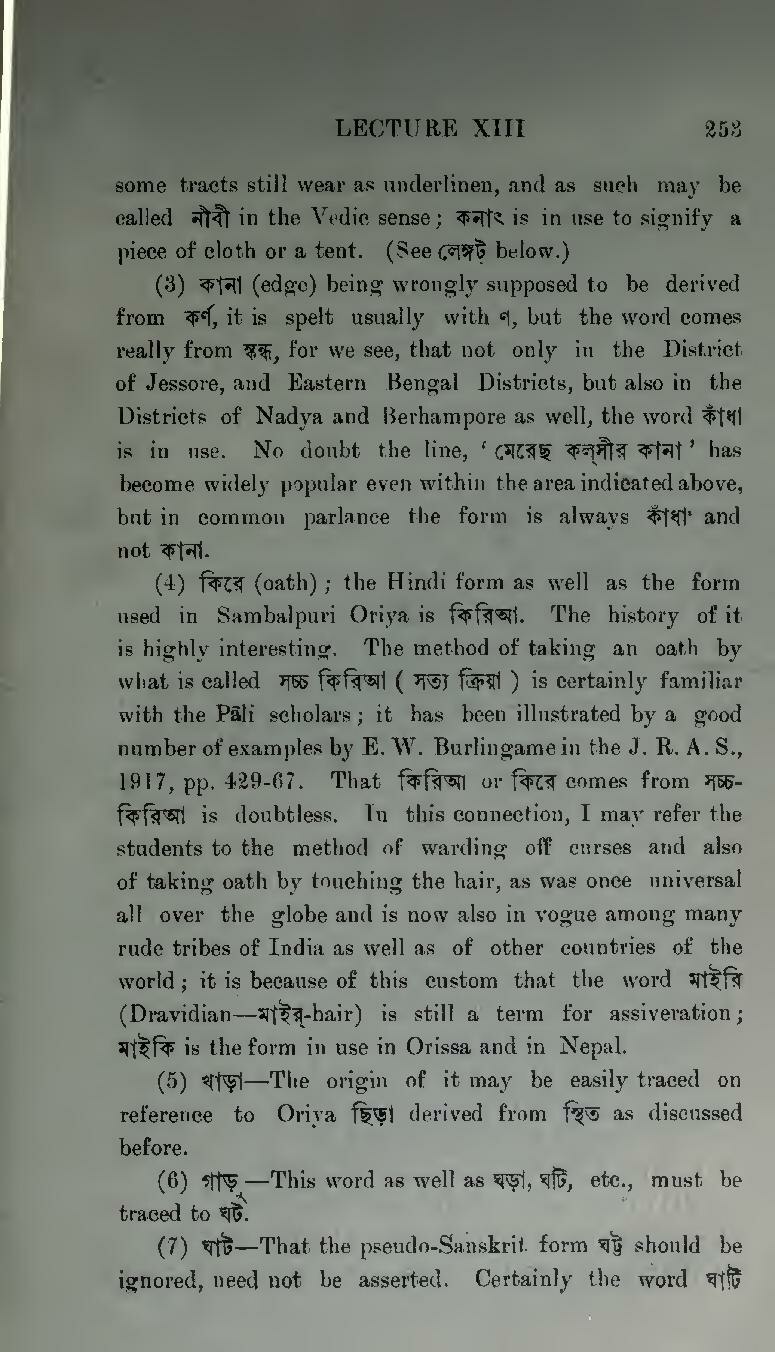some tracts still wear as underlinen, and as such may be called নীবী in the Vedic sense; কনাৎ is in use to signify a piece of cloth or a tent. (See লেঙ্গট below.)
(3) কানা (edge) being wrongly supposed to be derived from কর্ণ, it is spelt usually with ণ, but the word comes really from স্কন্ধ, for we see, that not only in the District of Jessore, and Eastern Bengal Districts, but also in the Districts of Nadya and Berhampore as well, the word কাঁধা is in use. No doubt the line, 'মেরেছ কল্সীর কানা' has become widely popular even within the area indicated above, but in common parlance the form is always কাঁধা and not কানা.
(4) কিরে (oath); the Hindi form as well as the form used in Sambalpuri Oriya is কিরিআ. The history of it is highly interesting. The method of taking an oath by what is called সচ্চ কিরিআ (সত্য ক্রিয়া) is certainly familiar with the Pāli scholars; it has been illustrated by a good number of examples by E. W. Burlingame in the J. R. A. S., 1917, pp. 429-67. That কিরিআ or কিরে comes from সচ্চ-কিরিআ is doubtless. In this connection, I may refer the students to the method of warding off curses and also of taking oath by touching the hair, as was once universal all over the globe and is now also in vogue among many rude tribes of India as well as of other countries of the world; it is because of this custom that the word মাইরি (Dravidian—মাইর্-hair) is still a term for assiveration; মাইকি is the form in use in Orissa and in Nepal.
(5) খাড়া—The origin of it may be easily traced on reference to Oriya ছিড়া derived from স্থিত as discussed before.
(6) গাড়ু—This word as well as ঘড়া, ঘটি, etc., must be traced to ঘট.
(7) ঘাট—That the pseudo-Sanskrit form ঘট্ট should be ignored, need not be asserted. Certainly the word ঘাটি
